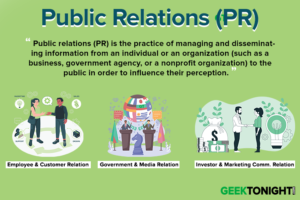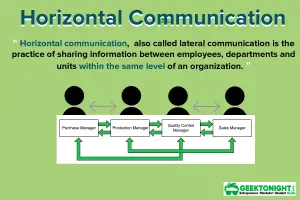What is Letter?
A letter is a written communication that contains a message to be sent to the recipient. Different types of letters have different formats, layouts and requirements. In a business organisation, letters play an important role to facilitate effective communication.
Letters used in organisations are known as formal letters or business letters because such letters are written to convey important information or to document any event or a decision, etc.
Table of Content
Letter Writing
Letter writing involves the usage of proper formats, layouts and accurate language. While writing a business letter, it is best to stick to a structured layout so that the letter is easy to read and appears professional. Appropriate use of salutation, correct spelling and grammar, and the tone used make the business letter look impressive to the readers.
The various elements in the layout of a business letter include:
- Heading: It contains the name of the sender of the letter with information about the organisation, logo, name, address, contact details, etc.
- Date: It states the date, month and year when the letter was written.
- Reference line: It is a statement describing the main focus of the letter.
- Inside address: It states the name and address of the receiver.
- Salutation: It is an utterance or gesture given to the receiver as an acknowledgement or greeting.
- Body: It contains the purpose and context for writing a letter and usually consists of three parts: introduction, object and conclusion.
- Complimentary closing: It is a form of courtesy to end the letter.
- Signature: It represents the person who wrote or dictated the letter.
Letter Layouts
A business letter, as discussed above, needs to be typed in a particular manner that is conventionally determined. The conventional system is followed to avoid confusion and waste of time as the business world is used to a particular format. The different layouts are as follows:
Full block format
This is a very popular format and is widely used. This is what we refer to as the left-aligned letter. All parts of the letter are left-aligned except the date which may be right-aligned, the name of the company that is centre-aligned and the address of the company that may be either at the centre along with the name or near the right-hand margin.
Since every part is left-aligned, no typing adjustments are required, and hence this format helps to save time. The most basic layout of business letters is the full-block style wherein all the elements are aligned on the left-hand margin except the heading that is usually centred.
Modified block format
This format is similar to the full-block format, although some parts are in the full indent (to start a line of text or position the line or text further from the margin than the main part of the text) format. This is also a widely-used format of letter writing, especially in government offices.
This letter format also is a time saver. No comma marks are used after the salutation or the subscription.
Types of Letters
There are broadly two types of letters, which are formal and informal. Formal letters are written for formal purposes; whereas, informal letters are personal letters written to family, friends or relatives. There is no concrete reason of writing an informal letter and the tone used for writing an informal letter can be casual; whereas, formal letters are written in a formal tone and structure.
In organisations, business letters are formal letters. Business letters are written for the fulfilment of several purposes. The purpose may be to enquire about a product to know its price and quality, availability, etc. This purpose is served if you write a letter of enquiry to the supplier.
After receiving your letter, the supplier may send you details about the product as per your requirement. A business letter is quite different from other kinds of letters that we read or write in terms of content, format and other features.
Business letters are written to meet several organisational objectives such as negotiating with creditors, enquiring about a product, sending out quotations to clients, writing complaints, etc. A single business letter cannot be used to have all types of information exchange within an organisation. Therefore, based on the purpose of communication, business letters are categorised into different types, as shown in Figure.
Let us discuss these types of letters in detail:
- Business enquiry letters
- Quotation letters
- Order letters
- Complaint letters
- Recovery letters
- Consumer grievance letters
- Persuasive and denial letters
Business enquiry letters
Buyers generally prefer to enquire about the details of the products/services that they want to buy. This information could be related to the quality, price, mode of delivery and payment, etc. They may also request a sample. When organisations (buyers) write letters to sellers in an attempt to gain one or more of the above information, the business correspondence is known as an enquiry letter.
Quotation letters
Once the organisation receives a letter of enquiry from a prospective buyer, the seller provides the relevant information by replying to the enquiry letter. This letter is referred to as a quotation, which is drafted keeping in view the information asked for, such as price list, mode of payment, discount offered, etc. The seller should reply to the inquiries carefully and promptly.
Order letters
The next step in the procedure is that the prospective buyer considers the reply to his/her enquiry letter and may decide to place an order with the seller who is meeting the terms and conditions as desired by the buyer. This letter is called an order letter, which is written by the buyer to the seller giving the order to purchase the products.
Complaint letters
After receiving the products, if the buyer is not satisfied with the quality or make of the product, he/she may address the seller through a complaint letter. It is generally written by the buyer in case he/she receives defective/damaged goods, an incorrect quantity of goods or substandard goods. The letter can also be written directly to the transit authority in case the products are damaged during transit.
Thus, a complaint letter is a business correspondence that draws the attention of the supplier to the supply of defective or damaged goods.
Certain points to be considered while writing a complaint letter are as follows:
- Complaint letters should be written promptly after receiving damaged products.
- The letter should suggest the seller on how the complaint can be dealt with such as compensation and replacement.
- The letter should include the period within which corrective action can be taken.
- The letter should end in a request to be more careful in future.
Recovery letters
Business correspondence written by the seller of products to buyers with regards to the collection of dues is referred to as a recovery letter. The objective of a recovery letter is to get payments cleared without annoying the buyer.
The letter should accurately and politely give details of the amount of arrears. The most important point to consider is that the language used in the recovery letter should be such that the buyer does not feel offended or mistrusted and future deals are not adversely affected.
Consumer grievance letters
Such letters talk about grievances that represent the concerns of consumers about the products or services of a company. They specify the reasons of consumer’s dissatisfaction or disgruntlement.
The aim of these letters is to bring the focus of the company’s official to deceptive and fraudulent business practices. This is the first step of seeking redressal in a legal manner by consumers. The letter format is same as studied in the complaint letter.
Persuasive and denial letters
Persuasive letters are formal letters written to persuade or request an organisation or bank for time advancements or money advancements. These written documents help in convincing an organisation, bank or person to accept the author’s issue, perspective or interest.
Business Communication Notes
(Click on Topic to Read)
- What is Business Communication?
- What is Communication?
- Types of Communication
- 7 C of Communication
- Barriers To Business Communication
- Oral Communication
- Types Of Non Verbal Communication
- What is Written Communication?
- What are Soft Skills?
- Interpersonal vs Intrapersonal communication
- Barriers to Communication
- Importance of Communication Skills
- Listening in Communication
- Causes of Miscommunication
- What is Johari Window?
- What is Presentation?
- Communication Styles
- Channels of Communication
- Hofstede’s Dimensions of Cultural Differences and Benett’s Stages of Intercultural Sensitivity
- Organisational Communication
- Horizontal Communication
- Grapevine Communication
- Downward Communication
- Verbal Communication Skills
- Upward Communication
- Flow of Communication
- What is Emotional Intelligence?
- What is Public Speaking?
- Upward vs Downward Communication
- Internal vs External Communication
- What is Group Discussion?
- What is Interview?
- What is Negotiation?
- What is Digital Communication?
- What is Letter Writing?
- Resume and Covering Letter
- What is Report Writing?
- What is Business Meeting?
- What is Public Relations?
Business Communication Notes
(Click on Topic to Read)
- What is Business Communication?
- What is Communication?
- Types of Communication
- 7 C of Communication
- Barriers To Business Communication
- Oral Communication
- Types Of Non Verbal Communication
- What is Written Communication?
- What are Soft Skills?
- Interpersonal vs Intrapersonal communication
- Barriers to Communication
- Importance of Communication Skills
- Listening in Communication
- Causes of Miscommunication
- What is Johari Window?
- What is Presentation?
- Communication Styles
- Channels of Communication
- Hofstede’s Dimensions of Cultural Differences and Benett’s Stages of Intercultural Sensitivity
- Organisational Communication
- Horizontal Communication
- Grapevine Communication
- Downward Communication
- Verbal Communication Skills
- Upward Communication
- Flow of Communication
- What is Emotional Intelligence?
- What is Public Speaking?
- Upward vs Downward Communication
- Internal vs External Communication
- What is Group Discussion?
- What is Interview?
- What is Negotiation?
- What is Digital Communication?
- What is Letter Writing?
- Resume and Covering Letter
- What is Report Writing?
- What is Business Meeting?
- What is Public Relations?










